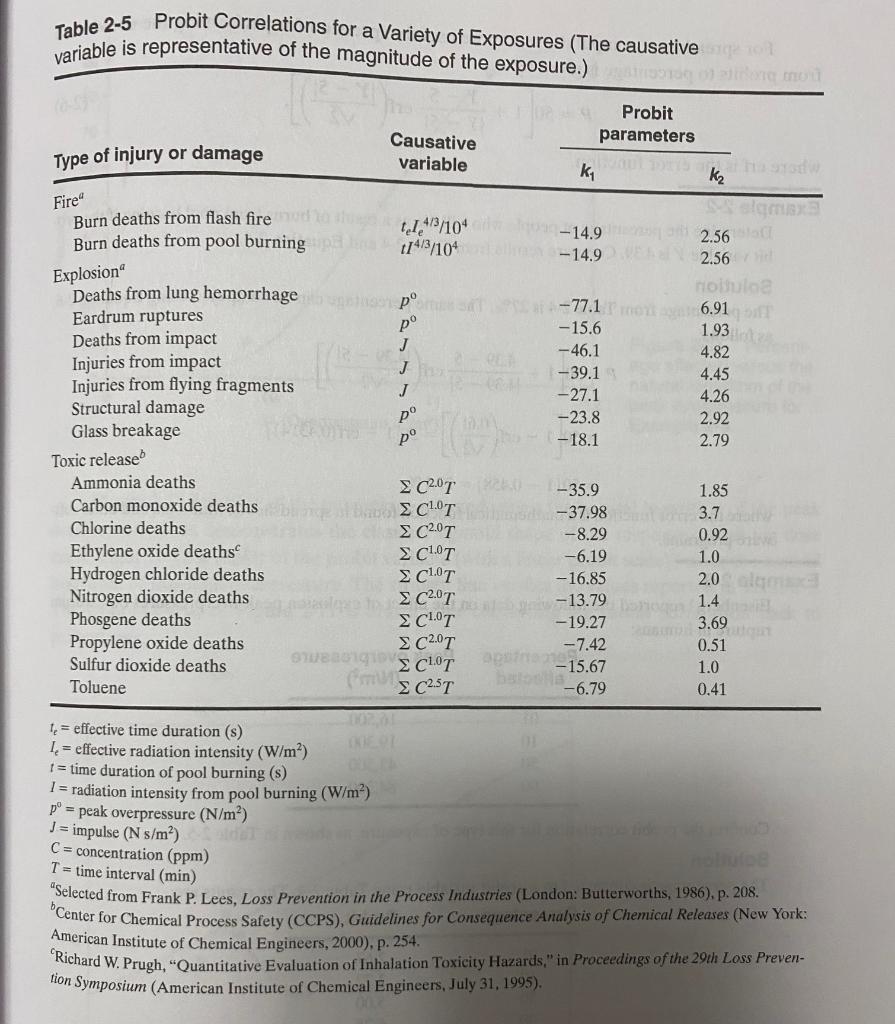Answered step by step
Verified Expert Solution
Question
1 Approved Answer
Using the probit equations provided below: Determine the explosion overpressure (in psi) where 50% fatalities due to lung hemorrhage are expected. Determine the explosion overpressure
Using the probit equations provided below:
-
Determine the explosion overpressure (in psi) where 50% fatalities due to lung hemorrhage
are expected.
-
Determine the explosion overpressure (in psi) where 50% of the structures are damaged.
-
Compare the results of parts a and b. Why is the overpressure of part b frequently used as
the minimum overpressure for fatalities?

Step by Step Solution
There are 3 Steps involved in it
Step: 1

Get Instant Access to Expert-Tailored Solutions
See step-by-step solutions with expert insights and AI powered tools for academic success
Step: 2

Step: 3

Ace Your Homework with AI
Get the answers you need in no time with our AI-driven, step-by-step assistance
Get Started


